Disclosure: This article contains affiliate links. We may earn a commission from purchases at no extra cost to you, which helps our travel content.
There's something almost alchemical about the way food connects us to a place. As I stood on Dom Luís I Bridge watching the sunset paint Porto's terracotta rooftops in golden hues, I realized this city had captivated me not just through my eyes, but through my taste buds. Having visited Portugal's major cities multiple times, I've developed a special relationship with Porto—one built on crusty bread, velvety wines, and conversations with passionate local producers. This autumn, my partner and I escaped the bustle of Marseille for a long weekend dedicated entirely to savoring Porto's gastronomic treasures. What unfolded was three days of sensory exploration that revealed as much about Portuguese culture as it did about ourselves. This isn't just a food guide; it's an invitation to use culinary experiences as a pathway to mindfulness and connection in one of Europe's most soulful cities.
Day 1: The Ritual of Port Wine
Our gastronomic pilgrimage began where it should—across the river in Vila Nova de Gaia, home to Porto's historic port wine cellars. Rather than rushing between tastings, we chose to spend an entire afternoon at just two carefully selected houses.
We started at Graham's, hiking uphill for panoramic views that reward the journey. Their lodge sits perched above the city like a contemplative monk overlooking his domain. The 90-minute premium tasting experience transformed my relationship with port wine forever. Our guide Miguel spoke of the wines as if introducing beloved family members, explaining how the Douro Valley's schist soils and microclimate create perfect conditions for these fortified treasures.
'Notice how the tawny port lingers on your palate,' Miguel instructed as we sipped a 20-year-old expression. 'This is time you're tasting—decades of patient transformation in oak barrels.' This reframing shifted something in me; suddenly I wasn't just consuming a product but participating in a tradition of patience.
Later, at the smaller, family-run Poças, we experienced a more intimate tasting. Here, amid barrels stacked like sleeping giants, I discovered my personal favorite—a white port tonic garnished with fresh mint and lemon. So refreshing that I've since purchased a cocktail mixing set to recreate this simple pleasure back home in Marseille.
We ended the day at Cantina 32 on Rua das Flores, where the chef's contemporary take on Portuguese classics provided the perfect foundation for our wine-warmed souls. Their octopus carpaccio was a revelation—paper-thin slices dressed simply with local olive oil, flaky sea salt, and smoked paprika. The perfect first day.
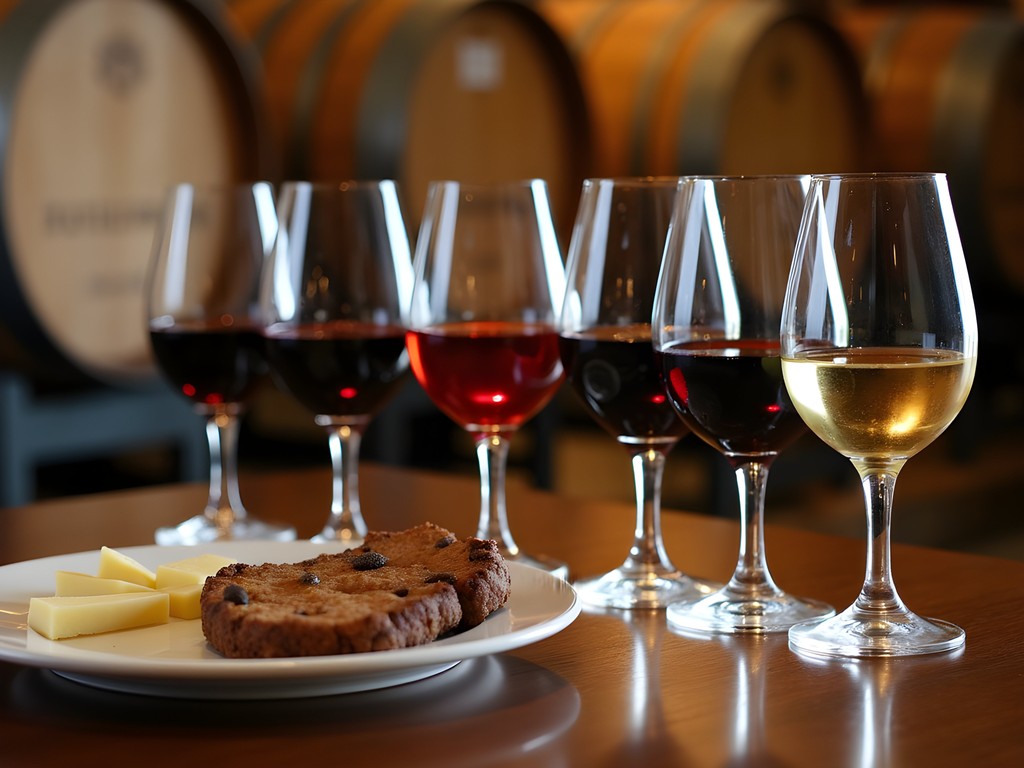
💡 Pro Tips
- Book port house tastings in advance, especially during high season
- Consider a morning tasting when your palate is freshest (despite conventional wisdom)
- Take the cable car down from Gaia for spectacular river views (but walk up for better appreciation)
- Ask about 'colheita' ports—single-harvest tawnies that offer exceptional value
Day 2: Markets & Petiscos - The Portuguese Art of Small Plates
Morning light in Porto has a particular quality—it seems to illuminate the city from within. We began our second day embracing local rhythm at Bolhão Market, recently restored to its 19th-century glory. Rather than approaching it as tourists, we shopped as locals do, gathering ingredients for an impromptu picnic.
The market's layout guides you through Portugal's culinary foundation: seafood glistening on ice, cured meats hanging like precious artifacts, and cheeses whose aromas tell stories of specific pastures and traditions. I was particularly drawn to a vendor selling only salt cod (bacalhau)—in various sizes and grades for different recipes. When I asked how many ways Portuguese cooks prepare bacalhau, the elderly vendor smiled: 'They say 365 ways—one for each day of the year—but my grandmother knew at least 366!'
With our market treasures secured in my trusty insulated tote, we continued to Manteigaria for what many consider Porto's finest pastéis de nata. What makes their custard tarts exceptional isn't just the perfectly caramelized tops or the shatteringly crisp pastry—it's watching them being made through the glass-walled kitchen, observing the meditation-like focus of the bakers.
For lunch, we embraced petiscos culture—Portugal's answer to Spanish tapas—at Casa Guedes. Their signature roast pork sandwich with Serra da Estrela cheese is transcendent in its simplicity. The melting cheese mingles with meat juices to create something far greater than its humble components suggest.
Dinner found us at Cantinho do Avillez, where celebrity chef José Avillez reimagines Portuguese classics. The exploding olives (a nod to molecular gastronomy) delighted us, but it was the arroz de pato (duck rice) that provided the evening's deepest comfort—a reminder that innovation works best when it honors tradition rather than replaces it.
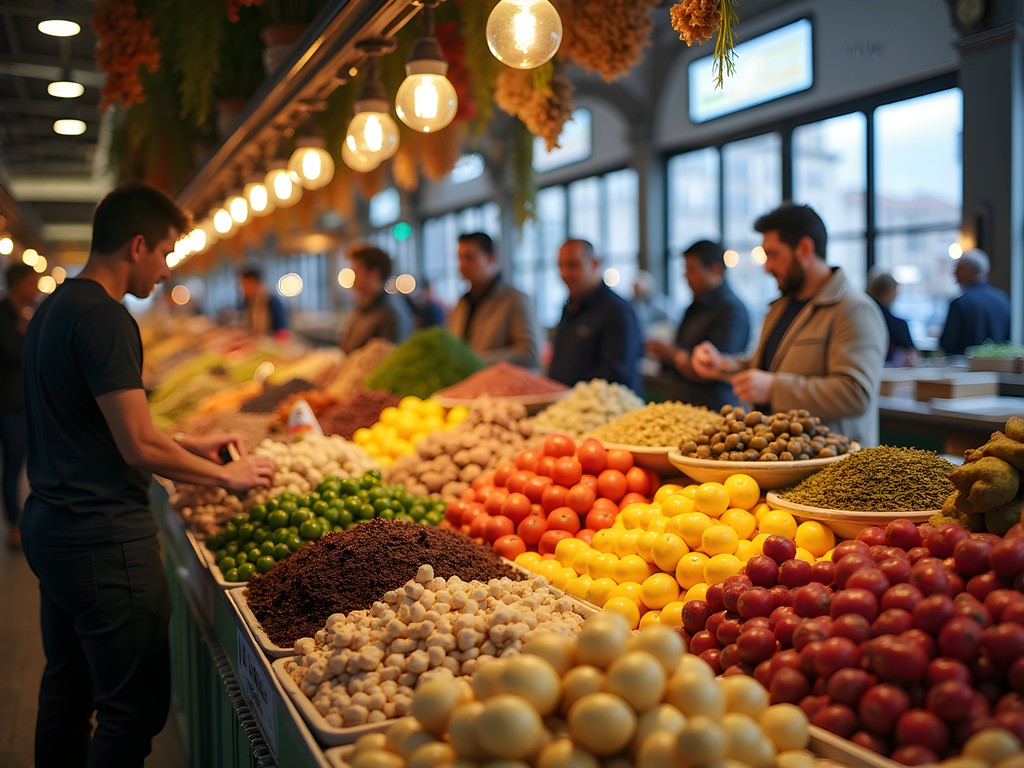
💡 Pro Tips
- Visit Bolhão Market early (before 10am) to see it at its authentic best
- Look for the bell at Manteigaria—it rings whenever fresh pastéis come from the oven
- At petiscos places, order fewer dishes initially—you can always add more
- Ask servers what their mothers cook at home—often reveals the most authentic recommendations
Day 3: Coffee Culture & The Infamous Francesinha
Our final day began with a coffee pilgrimage. As someone who approaches coffee with near-religious reverence, I'd researched Porto's café culture extensively. Época Porto, a third-wave coffee shop, provided our morning ritual. Their single-origin pour-over revealed flavor notes I'd never associated with Portuguese coffee—bright berries and chocolate rather than the traditional dark roast intensity.
The barista explained how Portugal's coffee landscape is evolving while maintaining its social importance. 'Coffee here isn't about grabbing and going,' he explained while meticulously preparing our drinks. 'It's about pause—creating small moments of connection throughout the day.'
This philosophy resonated deeply with my coaching practice. How often do we rush through experiences without creating space for reflection? I've since incorporated this 'café pause' concept into sessions with clients, using the ritual of preparing tea or coffee as a mindfulness anchor.
For lunch, we finally confronted Porto's most infamous culinary creation: the francesinha. This sandwich-that-ate-all-other-sandwiches isn't for the faint-hearted—layers of meats enclosed in bread, covered with melted cheese, topped with a fried egg, and swimming in a spiced tomato-beer sauce. At Café Santiago, we shared one between us (a wise decision) while watching the waiter's amused expression at our wide-eyed reaction.
'You eat this regularly?' I asked him, halfway through the delicious monstrosity.
'Only for special occasions,' he winked. 'Or very bad hangovers.'
To walk off our indulgence, we explored Foz do Douro where the river meets the Atlantic. Here, at sunset, we enjoyed our final Porto meal at Casa de Pasto da Palmeira, a seafood restaurant where the catch dictates the daily menu. Our grilled sea bass came with only lemon and olive oil—a testament to the Portuguese belief that the finest ingredients need minimal intervention.
I recorded our culinary memories in my travel journal, sketching dishes and noting flavor combinations that moved me. These sensory souvenirs often prove more valuable than photographs.
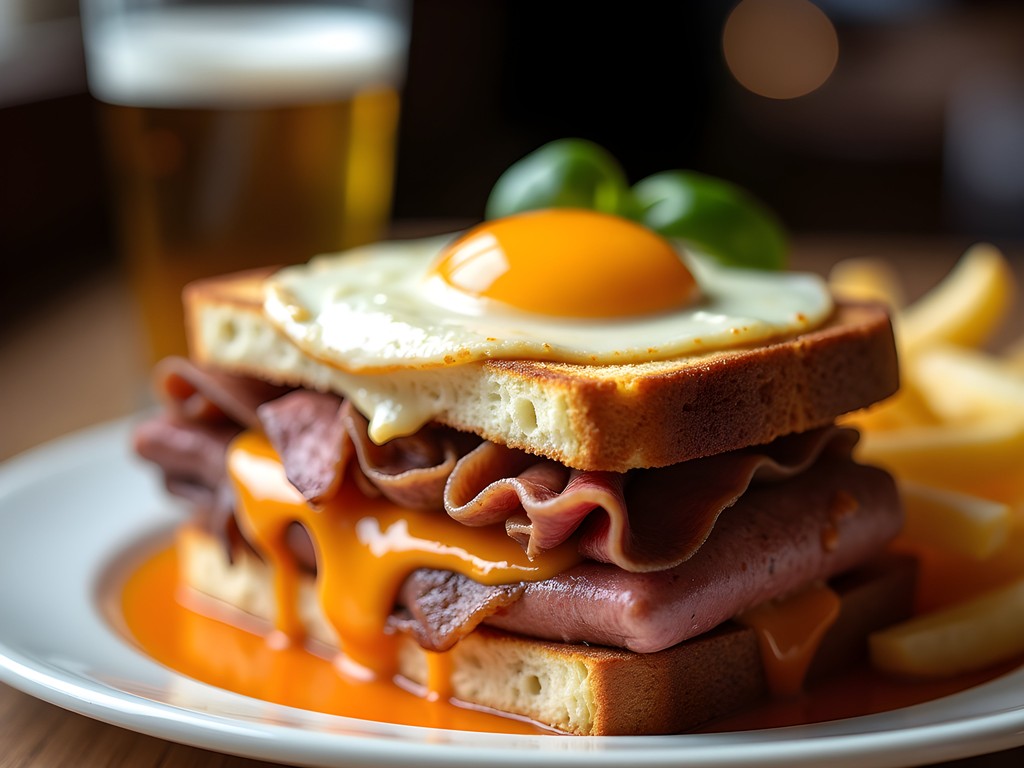
💡 Pro Tips
- Try a 'meia de leite' (half milk coffee) for breakfast like locals do
- Share a francesinha unless you're extremely hungry—they're massive
- Ask for 'bica' instead of 'espresso' to sound like a local
- Seafood restaurants near Foz offer better value than those in the tourist center
Beyond Eating: Connecting Through Food Experiences
What elevates a food-focused trip from mere consumption to meaningful experience is participation. On our final evening, we joined a small-group cooking class at Taste Porto's culinary center, where we learned to prepare cataplana (seafood stew) and Portuguese almond cake.
Our instructor Maria wasn't just teaching recipes but cultural narratives. 'When you make cataplana,' she explained while demonstrating how to layer ingredients in the distinctive clam-shaped copper pot, 'you're participating in centuries of Algarvian fishing culture. The pot seals in the ocean—the story of our country.'
This perspective transformed our understanding of Portuguese cuisine. Each dish became not just food but a cultural artifact—a delicious embodiment of history, geography, and collective wisdom.
The class culminated in a communal dinner where our group—strangers from four different countries—connected through the universal language of food appreciation. I've found this phenomenon consistently across my travels: cooking and eating together dissolves barriers faster than almost any other activity.
For those wanting to bring Portuguese flavors home, I recommend visiting A Vida Portuguesa for beautifully packaged traditional products. Their tinned fish collection makes for practical souvenirs that capture Portugal's seafaring essence. I purchased several varieties along with a Portuguese cookbook that has since transformed our weekly meal planning in Marseille.
Before leaving, we made one final stop at Livraria Lello, the famous bookstore rumored to have inspired aspects of Harry Potter. While primarily known for its architecture, their collection of Portuguese gastronomy books provided one last opportunity to deepen our understanding of the food culture we'd been experiencing.
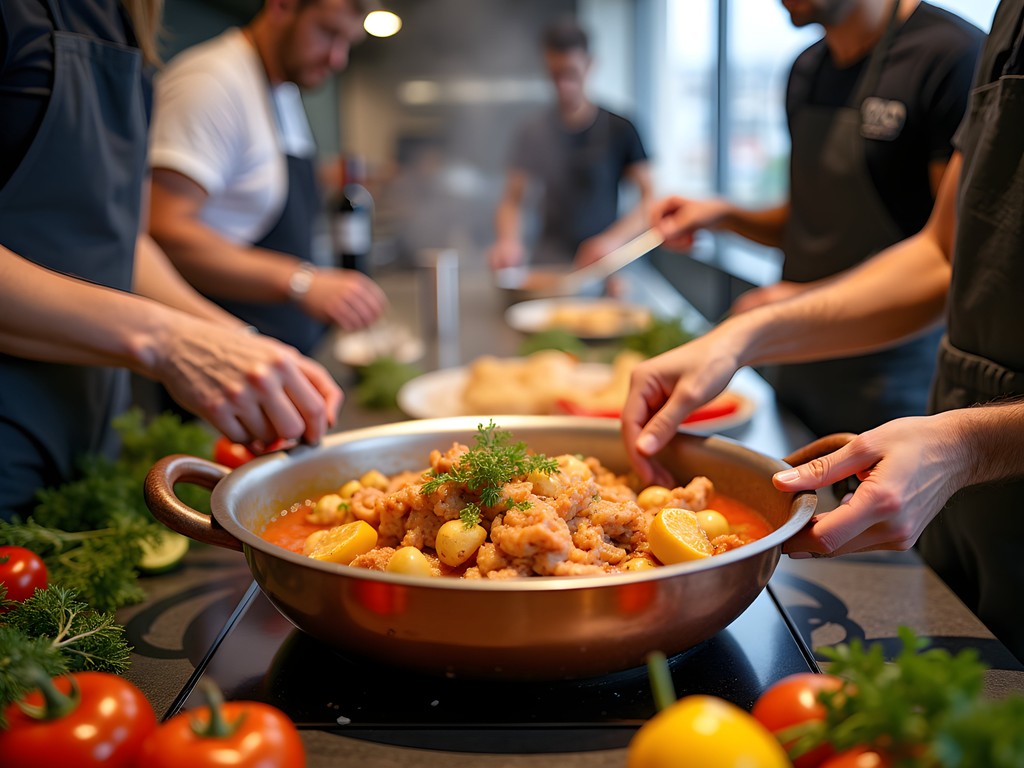
💡 Pro Tips
- Book cooking classes at least a week in advance—the good ones fill quickly
- Purchase tinned fish as souvenirs—they're authentic, packaged beautifully, and travel well
- Look for cooking classes that include market visits for a more complete experience
- Ask locals about their family recipes—many are happy to share traditions
Mindful Drinking: Porto's Wine Beyond Port
While port wine rightfully claims the spotlight, Porto offers a broader Portuguese wine education for curious palates. We dedicated one evening to exploring the country's diverse wine regions without leaving the city.
At Wine Quay Bar, perched directly on the riverfront with unobstructed views of Vila Nova de Gaia, we embarked on a flight of vinho verde—the 'green wine' from Portugal's northwest. These slightly effervescent, lower-alcohol wines paired perfectly with the mild autumn evening. What struck me was how the terroir expressed itself so differently across samples from vineyards just kilometers apart.
'Portuguese wines remain one of Europe's best values,' explained Paulo, the bar's knowledgeable owner. 'We're still being discovered, which means quality far exceeding price.'
He guided us through a tasting journey from the mineral-forward whites of Dão to the robust reds of Alentejo, each wine accompanied by small regional food pairings that highlighted its characteristics. I was particularly taken with wines from the Bairrada region, whose limestone soils produce structured reds with remarkable aging potential.
For those wanting to explore further, Prova Wine Food & Pleasure offers excellent wine flights with digital information cards—perfect for visual learners who want to remember what they've tasted. I used my wine journal to record tasting notes and food pairing successes.
What makes Porto's wine scene special isn't just the quality but the accessibility. Even high-end wines can be sampled by the glass at reasonable prices, and sommeliers genuinely seem interested in education rather than upselling. This democratized approach to wine appreciation aligns perfectly with my belief that meaningful experiences shouldn't be gatekept by excessive cost or pretension.
By the evening's end, we'd compiled a list of Portuguese wines to seek out back home—tangible memories to uncork when we need a sensory return to Porto's cobblestone streets and riverside charm.
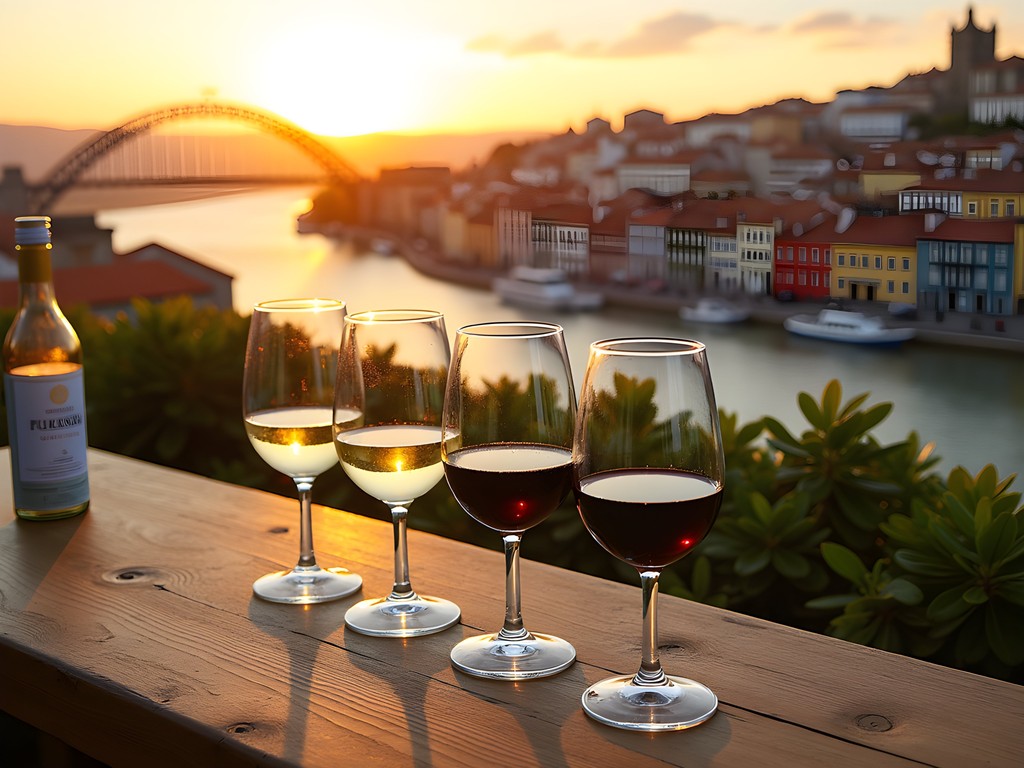
💡 Pro Tips
- Try vinho verde slightly chilled as an aperitif—its light effervescence is perfect before dinner
- Look for wines from Bairrada region if you enjoy structured reds with aging potential
- Ask for 'copos' (wine by the glass) to sample more varieties without commitment
- Portuguese wine apps like 'Vivino' help track your discoveries for future reference
Final Thoughts
As our train pulled away from Porto, I realized our three-day culinary journey had offered something beyond delicious meals—it had provided a framework for understanding Portuguese identity. Through food and wine, we'd accessed stories of exploration, resilience, and the profound Portuguese concept of saudade—a bittersweet longing that somehow enhances the present moment. Porto taught me that mindful eating isn't just about savoring flavors but connecting to the human stories behind each dish. Whether you're planning a romantic weekend or a solo discovery trip, Porto's gastronomic landscape offers accessible entry points to authentic cultural experiences. As a life coach, I often remind clients that meaningful travel isn't about checking off famous sights but creating moments of genuine connection. In Porto, these connections happen naturally across tables laden with generations of culinary wisdom. When will you answer Porto's delicious invitation?
✨ Key Takeaways
- Porto's food scene offers authentic cultural immersion at relatively accessible prices
- Balancing structured tastings with spontaneous discoveries creates the richest experience
- Portuguese cuisine is about simplicity and quality ingredients rather than complexity
- Participating in food experiences (markets, cooking classes) creates deeper connections than restaurant-hopping alone
📋 Practical Information
Best Time to Visit
September-October or April-May for pleasant temperatures and fewer crowds
Budget Estimate
€100-150 per day per person including accommodations, meals and experiences
Recommended Duration
3-4 days ideal for food focus
Difficulty Level
Easy - Compact City Center With Good Public Transportation

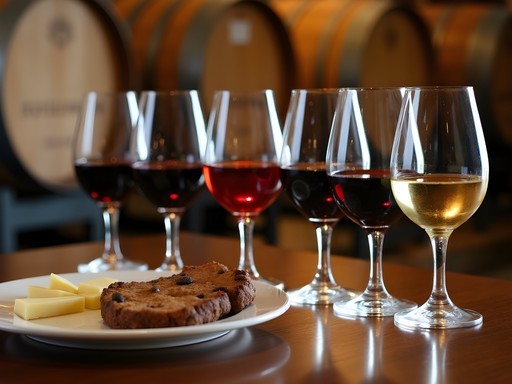













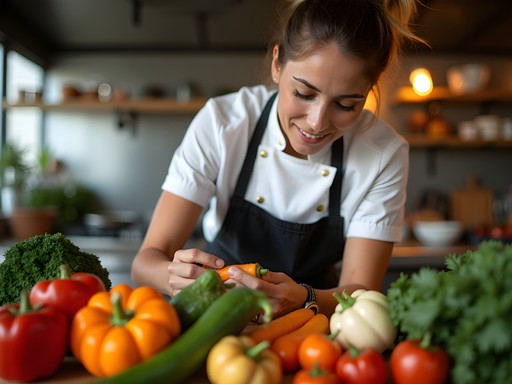
Comments
Claire Hawkins
Emily, your post brought back so many delicious memories! We visited Porto with our kids last summer and were pleasantly surprised by how family-friendly the food scene was. The Mercado do Bolhão was a huge hit - my children loved picking out different fruits to try and watching the fishmongers. For families reading this, I'd recommend the petiscos approach for kids to sample different foods without committing to full dishes. Also, don't miss the little chocolate shops around Rua das Flores - the port wine infused chocolates make perfect gifts to bring home. We found our pocket guide invaluable for navigating the hilly streets with tired little legs!
vacationninja
Just booked tickets to Porto after reading this! Can't wait to try everything!
springway687
Heading to Porto next month! Which port wine house would you recommend for someone who's never tried port before? Is it better to book tours in advance?
bluechamp
Not Emily but we really enjoyed Cálem - they had a good intro tasting and you can book online. Definitely book ahead, especially if you're going in high season!
Emily Butler
I'd second Cálem for beginners! They have a nice variety and good explanations. And yes, booking ahead saved us a lot of time. If you have a chance, try to fit in a Douro Valley day trip - seeing the vineyards gives you a whole new appreciation for port wine.
Gregory Boyd
Excellent breakdown of Porto's food scene! I'd add that timing is everything when visiting Livraria Lello - get there at opening to avoid the crowds, then reward yourself with coffee and pastéis de nata at Majestic Café afterward. For port tasting, I found the smaller houses in Vila Nova de Gaia offered more personal experiences than the big names. Taylor's has the best views, but Augusto's had my favorite tawny port and a much more intimate tasting experience. Did you make it to Cantinho do Avillez? Chef José Avillez's take on traditional Portuguese dishes is worth the splurge.
Emily Butler
Thanks for the tips, Gregory! I missed Augusto's but will definitely add it to my list for next time. And yes, the smaller houses did offer more personal experiences - I particularly enjoyed Kopke for their aged white ports.
wanderlustrider3794
Those sunset photos from Dom Luís Bridge are gorgeous! 😍
bluechamp
Just got back from Porto last week and this post is spot on! That Francesinha sandwich nearly put me in a food coma - so worth it though! We tried the one at Café Santiago which was incredible. Did you find the portions everywhere to be massive or was that just us?
Emily Butler
Café Santiago was my top choice too! And yes, the portions are definitely generous throughout Porto - I learned quickly to pace myself or risk missing out on other treats!
vacationhero
OMG THE FRANCESINHA!! I'm still dreaming about it three months later! Definitely not diet food but WORTH IT!
bluelife
That sunset photo from Dom Luís I Bridge is absolutely stunning! Perfect golden hour shot. Porto really does have the most photogenic light.
Savannah Wood
Emily, your post captures the soul of Porto perfectly! I spent a month there last summer and the food scene completely won me over. For anyone planning a trip, I'd add a visit to the tiny family-run Taberna Santo António in the old town - no menu, just the owner telling you what's fresh that day. Their bacalhau (salt cod) dishes are incredible. Also, don't miss the sunset wine experience on the Douro - watching the sun go down over the vineyards while sipping port on a small boat was magical. Emily, did you make it to any of the port lodges in Vila Nova de Gaia? Cálem's tour was my favorite for the perfect balance of information and generous tastings!
Emily Butler
Thanks Savannah! Yes, I visited Cálem and Graham's in Gaia - both wonderful experiences! That taberna recommendation sounds amazing, I'll have to check it out next time. The no-menu, family-run places always have the best food.
globemaster
We just got back from Porto last week and followed a similar food journey! One tip - don't miss the port tonics. I was skeptical about mixing good port with tonic but it was surprisingly refreshing for those hot afternoons. Also, the pastéis de nata at Manteigaria were way better than the ones we tried at Belém in Lisbon (don't tell the Lisbon folks I said that).
smartchamp
That Francesinha sandwich looks INCREDIBLE! Adding it to my must-eat list!
bluelife
Just be prepared - it's a BEAST of a sandwich! I could barely move afterward but totally worth it. Try Café Santiago for the best one!
Venture X
Premium card with 2X miles, $300 travel credit, Priority Pass